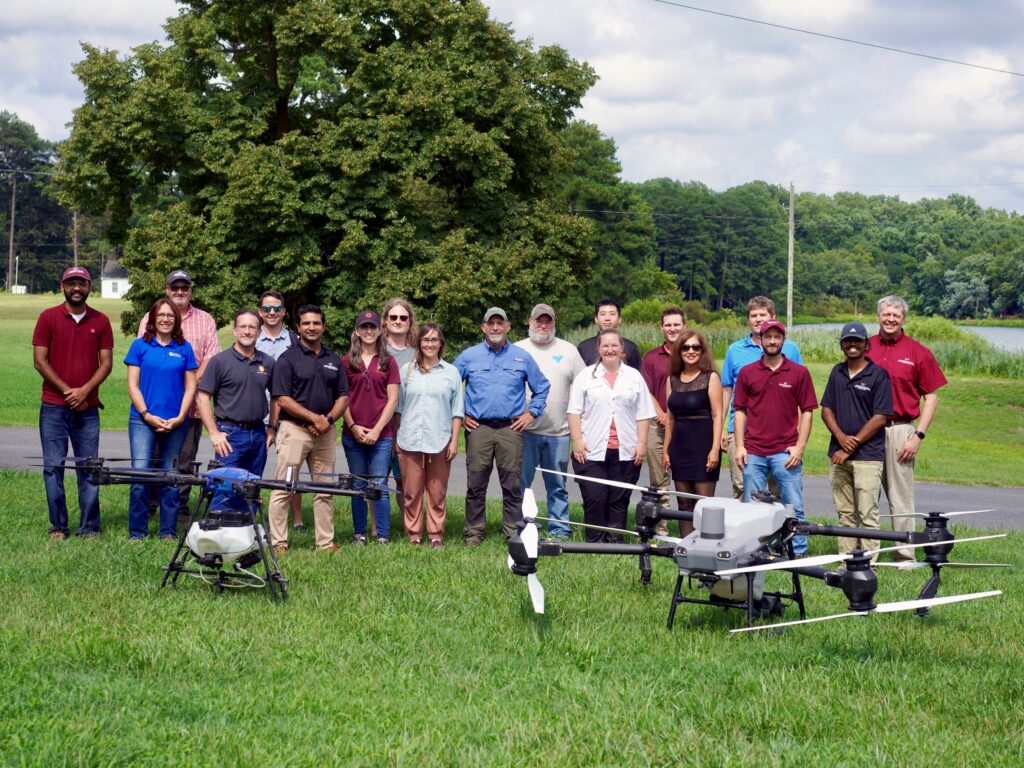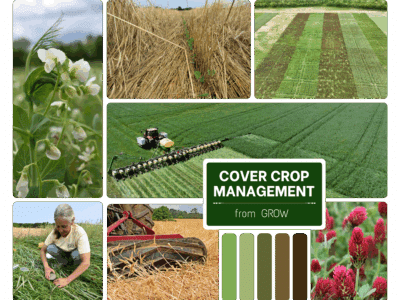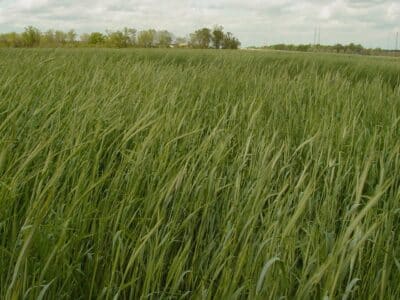This article is reprinted with permission from Virginia Tech Cooperative Extension
The Eastern Shore Agricultural Research and Extension Center, Virginia Tech organized the Mid-Atlantic Spray Drone workshop on July 23-24, 2024, at Painter, VA. The workshop highlighted benefits of unmanned aerial systems (UAS), also known as aerial drones, emphasizing their role in crop protection and comparing efficacy and economics with traditional spraying methods. Over the two-day workshop, federal regulators, university researchers, industry personnel, and custom pesticide applicators (Figure 1) examined the current status of the technology, and debated drift issues, and management strategies. The workshop was attended by participants from Virginia, Delaware, Maryland, West Virginia, Pennsylvania, and New York.

Dan Goerlich (Associate Director, Virginia Cooperative Extension) and Mark Reiter (Director, Eastern Shore Agricultural and Extension Center and Extension Specialist) spoke about Virginia’s extension priority on smart farming, and how soil, agronomy, and pest management can be integrated for future sustainable farming systems. Vijay Singh (Assistant Professor and Extension Specialist, Virginia Tech), and Daniel Martin (USDA-Agricultural Research Service, Research Engineer) highlighted the importance of spray drone technology, and shared results of herbicide efficacy studies conducted in soybean, corn, cotton, and vegetables.
They also discussed important considerations and flight parameters optimization for effective operations. Their studies indicated issues with rotary atomizers and inconsistency in droplet spectra at higher spray volumes and potential solutions. They agreed that current aerial spray drones with rotary atomizers are designed for low volume spray applications and may not perform well at greater spray volumes equivalent to tractor sprayers.
Dr. Singh highlighted the results from studies which indicated that aerial spray drones provide greater efficacy at late postemergence weed control compared with tractor sprayers when weeds and crop plants are large and overlapped. At preemergence and early postemergence herbicide applications, both aerial spray drones and tractors provided similar weed control. Shawn Askew (Professor and Turf Weed Extension Specialist, Virginia Tech), shared his team’s research on turf grass, and potential use of spray drones for weed management in turf. He showed how different spray altitudes can impact spray coverage and overall efficacy. Studies conducted by researchers in turf and row-crops indicated that spray altitude in the range of 6.5-10 feet is ideal for most of the spray drone systems. However, spray altitude should be decided based on minimum height that can provide uniform coverage, least drift, but above tallest object/ plant in the field.
Steve Li (Associate Professor and Extension Weed Specialist, Auburn University) and Simerjeet Virk (Associate Professor, Precision Ag, Auburn University) discussed their studies on potential drift issues, deposition studies, and large-scale spray operations. Dr. Li shared his experiences on the use of adjuvants and droplet size to minimize pesticide drift. Sarah Hovinga (Bayer CropScience) discussed regulatory concerns, and her efforts to standardize spray drift protocols to bring transparency and uniformity in methodology for drift studies. Currently, drift is a major concern surrounding spray drones, as drift can lead to pesticides ending up on non-target areas, potentially injuring neighboring crops. This is influenced by wind speed, direction, the size of the droplets being sprayed and many other factors, such as, lesser downward thrust in case of aerial drones compared with manned aircraft, and higher altitude compared with tractor sprayers.

Andrew Shelby (Physical Scientist, Environmental Protection Agency) described EPA’s objectives, framework, and current policy on spray drone operations. He indicated that EPA is continuously working with partners and gathering information for updating documentation on labelling requirements. Dana Beegle (Pesticide Program Publications and Marketing Coordinator, Virginia Tech) shared updates on aerial drone regulations and manual revisions in Virginia which will help applicators. John McGee (Geospatial Extension Specialist, Virginia Tech) and Daniel Cross (Research Associate, Conservation Management Institute, Virginia Tech) provided information on ‘advance teachers’ training program on drones’, and other initiatives where drone workshops were conducted for non-profit organizations, state extension staff, and high school educators. They also provide charts and guidelines to be utilized by educators to deliver courses to meet the needs of Virginia’s aerial drone industry. Experiences were also shared by 4th generation farmer, Andrew Bond from Ohio, on spray drone technology and his venture into custom pesticide application services with drones (Top Dog Ag). Mr. Bond shared his business strategy and how he conducted operations on over 6,500 acres this past year and is targeting 10-12,000 acres in 2024.
In general, custom applicators can spray insecticides and fungicides over 30-40 acres per hour. He described the economics and diverse applications which made him profitable in this business. Aerial drone technology is continuously changing, and Kelley Wittenberg from LeadingEdge Aerial Technologies shared how her team is refining the spray drone technology and provided updates on new PrecisionVision 40X equipped with LIDAR, multispectral camera, and versatile payload capability. Mark Ledebuhr (Principal Consultant, Application Insight, LLC) emphasized the importance of the right tools and methodology to collect swath, and drift data. He demonstrated how to correctly layout collector rolls and use of analyzer (Swath Gobbler) for early insights on swath contraction and spray patterns. Participants agreed that drone pilots should conduct swath analysis and pattern testing for calibration before farm operations.
Participants visited field trials conducted with aerial drones (Figure 2). Studies highlighted the use of aerial drones with varying spray volumes for herbicide applications in different crops, impact of droplet size, and extent of ground drift damage in windy conditions. Drone demonstrations (spot sprays and blanket applications) were provided using LeadingEdge’s PrecisionVision 35X, and DJI T50. Molly Cheatum (Swift AeroSeed) discussed how spray drones can be used for dual purpose where the same system can spread fertilizers and cover crop seed with minor changes or with simply swapping the payload tanks. She provided information on Swift AeroSeed services, and demonstrated cover crop seeding with an aerial drone (LeadingEdge PV40X).
The workshop provided information on the latest research, highlighted practical aspects and challenges with regards to operating spray drones, and visual evaluations of the technology through field trials. Participants provided feedback and liked the idea of bringing stakeholders and researchers to the same platform and sharing their expert knowledge and opinions. The workshop was sponsored by USDA-National Institute of Food and Agriculture, Virginia Cooperative Extension, Virginia Tech – Center for Advanced Innovation in Agriculture, LeadingEdge Aerial Technologies, Hoober Inc. DJI drones, Bayer CropScience, and Application Insight, LLC. Demonstration plots and field trials for the workshop were established and managed by the weed science team (Akash Brar, Fatemeh Esmaeilbeiki, Milos Viric, Rutvij Wamanse, Robert Cooley) at Eastern Shore AREC, Virginia Tech.
See a video from the Virginia Farm Bureau on the spray done technology on display at this workshop below:
Authors/Participants
Vijay Singh, Assistant Professor and Extension Specialist, Eastern Shore AREC, Virginia Tech
Daniel Goerlich, Associate Director, Virginia Cooperative Extension
Mark Reiter, Professor and Extension Specialist, Eastern Shore AREC, Virginia Tech
Daniel Martin, Research Engineer, United States Department of Agriculture – Agricultural Research Service
Andrew Shelby, Physical Scientist, Environmental Protection Agency
Shawn Askew, Professor and Turf Weed Specialist, School of Plant and Environmental Sciences, Virginia Tech
Akash Brar, Research Assistant, Eastern Shore AREC, Virginia Tech
Fatemeh Esmaeilbeiki, Research Assistant, Eastern Shore AREC, Virginia Tech
Sarah Hovinga, Regulatory Policy Analyst, Bayer CropScience
Steve Li, Associate Professor and Extension Weed Specialist, Auburn University
Simerjeet Virk, Associate Professor and Precision Ag Specialist, Auburn University
Dana Beegle, Pesticide Program Publications and Marketing Coordinator, Virginia Tech
John McGee, Geospatial Extension Specialist, Virginia Tech
Daniel Cross, Research Associate, Conservation Management Institute, Virginia Tech
Andrew Bond, Custom Pesticide Applicator and Farmer, Top Dog Ag
Kelley Wittenberg, Technologies Technical Salesperson, LeadingEdge Aerial Technologies
Mark Ledebuhr, Principal Consultant, Application Insight LLC
Milos Viric, Research Assistant, Eastern Shore AREC, Virginia Tech
Rutvij Wamanse, Research Assistant, Eastern Shore AREC, Virginia Tech
Robert Cooley, Research Specialist, Eastern Shore AREC, Virginia Tech





























































































